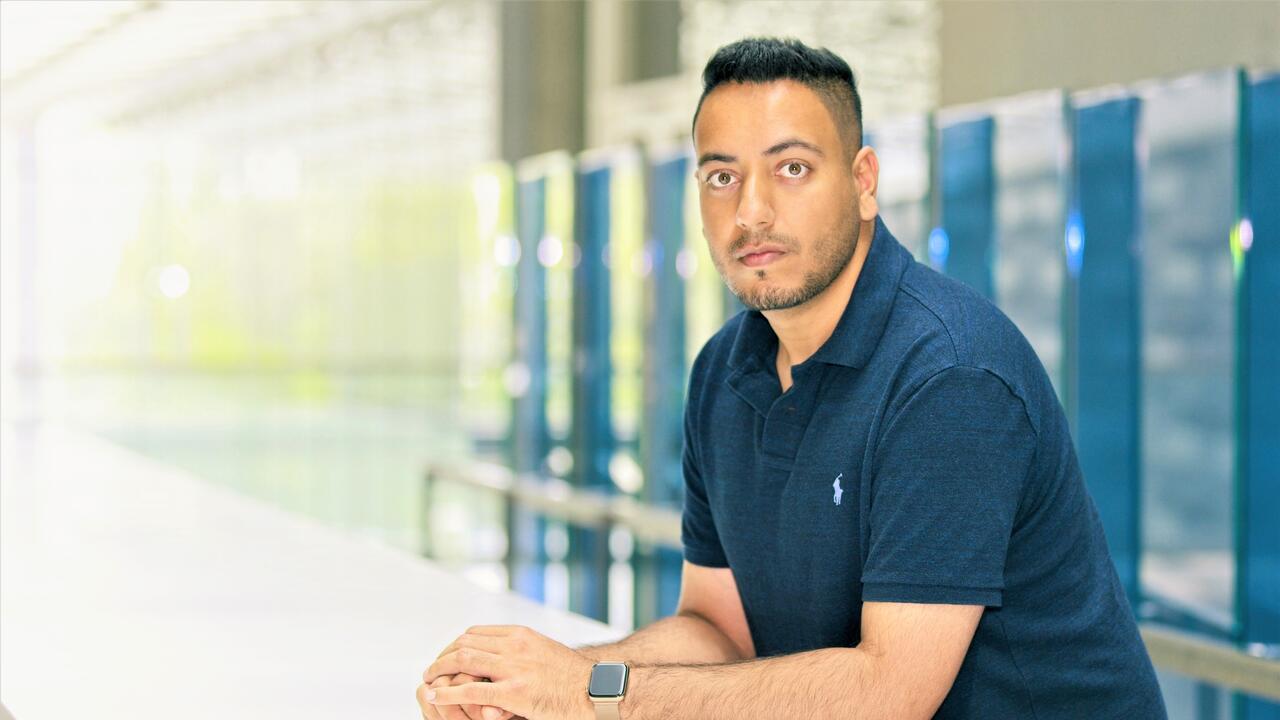
From childhood toys to the NASA jet propulsion lab
Top doctoral graduate Tejinder Singh is still driven by curiosity and a pure passion for learning

Top doctoral graduate Tejinder Singh is still driven by curiosity and a pure passion for learning
By Brian Caldwell Faculty of EngineeringTejinder Singh has come a long way since he was a boy who loved taking his electronic toys apart and seeing if he could put them back together again.
Now a postdoctoral fellow at the NASA Jet Propulsion Laboratory in California and a research associate at Waterloo Engineering, Singh added to a growing list of accomplishments when he was selected to receive the Spring 2021 Governor General’s Gold Medal for the highest standing in a doctoral program at the University of Waterloo.
All along the road from childhood toys to contributions towards space exploration, however, one thing has remained the same for the new doctor of electrical and computer engineering: a keen interest in understanding and creating technology.
“Whatever I achieved during my PhD was a direct result of my curiosity and my passion for learning,” says Singh, who assembled his first computer when he was only 10. “Since my research was on a topic that I thoroughly enjoyed, it never felt like a burden.”
Supervised by Raafat Mansour, a professor of electrical and computer engineering, Singh focused on the development of miniaturized, on-chip switching devices for use in 5G and future 6G wireless communications systems.
His devices take advantage of phase-change materials for use with microwave and millimeter-wave frequency applications that promise to dramatically boost network speeds and capacity. Their advantages include low power consumption, low loss and the ability to operate at very high frequencies.
“Such wireless hardware for 5G and upcoming 6G will not only allow users to send and receive nearly unfathomable amounts of data using their handheld devices, this technology can also be employed in other applications like future autonomous vehicles, biomedical monitoring, and satellite communications for deep-space research,” he wrote in a summary of his work.
While pursuing his passion at Waterloo, Singh developed and optimized an in-house process to fabricate switching devices thinner than a human hair, published over two dozen research papers, and collected numerous awards, scholarships and fellowships.
For his success, Singh credits support from Mansour and his wife and fellow researcher, Navjot Khaira, as well as dedicated focus on research with tangible impact and the drive to push through failures. He also cites the backing of his parents and siblings as he chased his dream to be a scientist.
“I was stubborn and determined enough to keep trying again and again,” he says. “Persistence is the key here. It was only after many failed trials and fabrication runs that I was finally able to achieve reliable devices.”
At the master’s degree level, Linda Yunzhi Wang was the top engineering student and a finalist for the Governor General’s Gold Medal. She was supervised by Alexander Wong, a professor of systems design engineering.
Go to Prestigious Governor General’s Gold Medal awarded to two Waterloo students for more information on Singh and the top University-wide master’s student, Sara Leanne Wyngaarden of the School of Public Health and Health Systems.

Read more
Here are the people and events behind some of this year’s most compelling Waterloo stories

Read more
Meet five exceptional Waterloo graduate students crossing the convocation stage as Class of 2025 valedictorians

Read more
Twenty-six researchers receive federal funding to drive discovery, innovation and research infrastructure development
The University of Waterloo acknowledges that much of our work takes place on the traditional territory of the Neutral, Anishinaabeg, and Haudenosaunee peoples. Our main campus is situated on the Haldimand Tract, the land granted to the Six Nations that includes six miles on each side of the Grand River. Our active work toward reconciliation takes place across our campuses through research, learning, teaching, and community building, and is co-ordinated within the Office of Indigenous Relations.